Contamination on Capacitor Sleeves, Pins, Oscillator
Gideon Analytical Laboratories received a Printed Circuit Board (PCB) with contamination on several capacitor sleeves, connector pins, and an oscillator. An electrolytic capacitor is a capacitor whose anode (+) consists of pure aluminum foil with an etched surface, covered with a uniformly very thin barrier layer of insulating aluminum oxide, which operates as a dielectric. The electrolyte, which covers the rough surface of the oxide layer, operates as the second electrode, the cathode (-). E-caps have the largest capacitance values per unit volume compared to the two other main conventional capacitor families, ceramic and plastic film capacitors, but much smaller capacitance than similarly sized supercapacitors. Aluminum electrolytic capacitors are divided into three subfamilies by the type of electrolyte. There are non-solid (liquid, wet) aluminum electrolytic capacitors, solid manganese dioxide aluminum electrolytic capacitors, and solid polymer aluminum electrolytic capacitors. Basic parts to an electrolytic capacitor include anode foil, a dielectric, cathode foil, cathode oxide layer, non-solid electrolyte, paper spacer, conducting polymer, among other materials. An electronic oscillator is an electronic circuit that produces a periodic, oscillating electronic signal, often a sine wave or a square wave. Oscillators convert direct current (DC) from a power supply to an alternating current (AC) signal. They are widely used in many electronic devices. The goal was to identify the contamination on the capacitor sleeves, connector pins, and an oscillator.
Failure analysis was performed to identify the contamination. SEM-EDS analysis was performed on the yellow contamination material coming from the top of the capacitor. Micrographs were taken. EDS analysis revealed zinc chlorides, along with silicates (dirt), with a small amount of organics present. Using SEM-EDS to take micrographs of the oscillator housing, the corrosion was highly visible. EDS analysis of the housing revealed the presence of chlorides; they were excessively high. The connector pins also had fallen victim to corrosion. SEM-EDS on three spots of the corrosion revealed an all to a familiar pattern: chlorides were very high. This corrosion, which caused these PCBs to ultimately fail, can be identified as chloride related. It is the result of environmental issues at the place of installation.
Gideon Analytical Laboratories has been solving electrical problems for decades. Our knowledge, determination, experience, and analytical equipment make us one of the preeminent analytical laboratories in the world. We have helped hundreds of companies save billions of dollars. If your company is having electronics problems, what are the ramifications? Will the company be sued? Will poor quality components result in the destruction of property, injuries, or loss of life? Will your company be able to salvage its reputation? You want reliable products that work correctly. We solve problems. We can solve yours. Give Gideon Analytical Laboratories today.
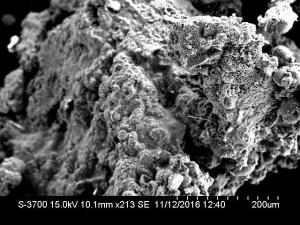
Micrograph of surface connector pins
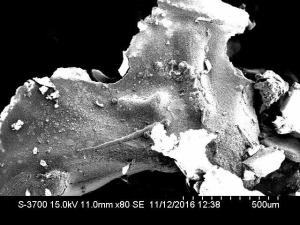
Micrograph of yellow material coming from electrolytic capacitor
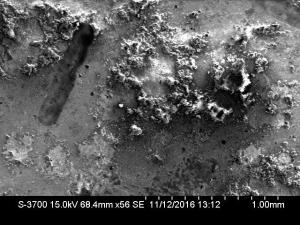
Micrograph of corrosion on oscillator housing
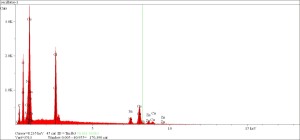
EDS of contamination on oscillator housing, chlorides present
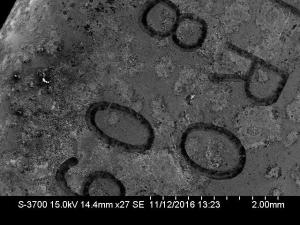
Micrograph of oscillator housing, shows pitting and corrosion

EDS of contamination on connector pins, chlorides present